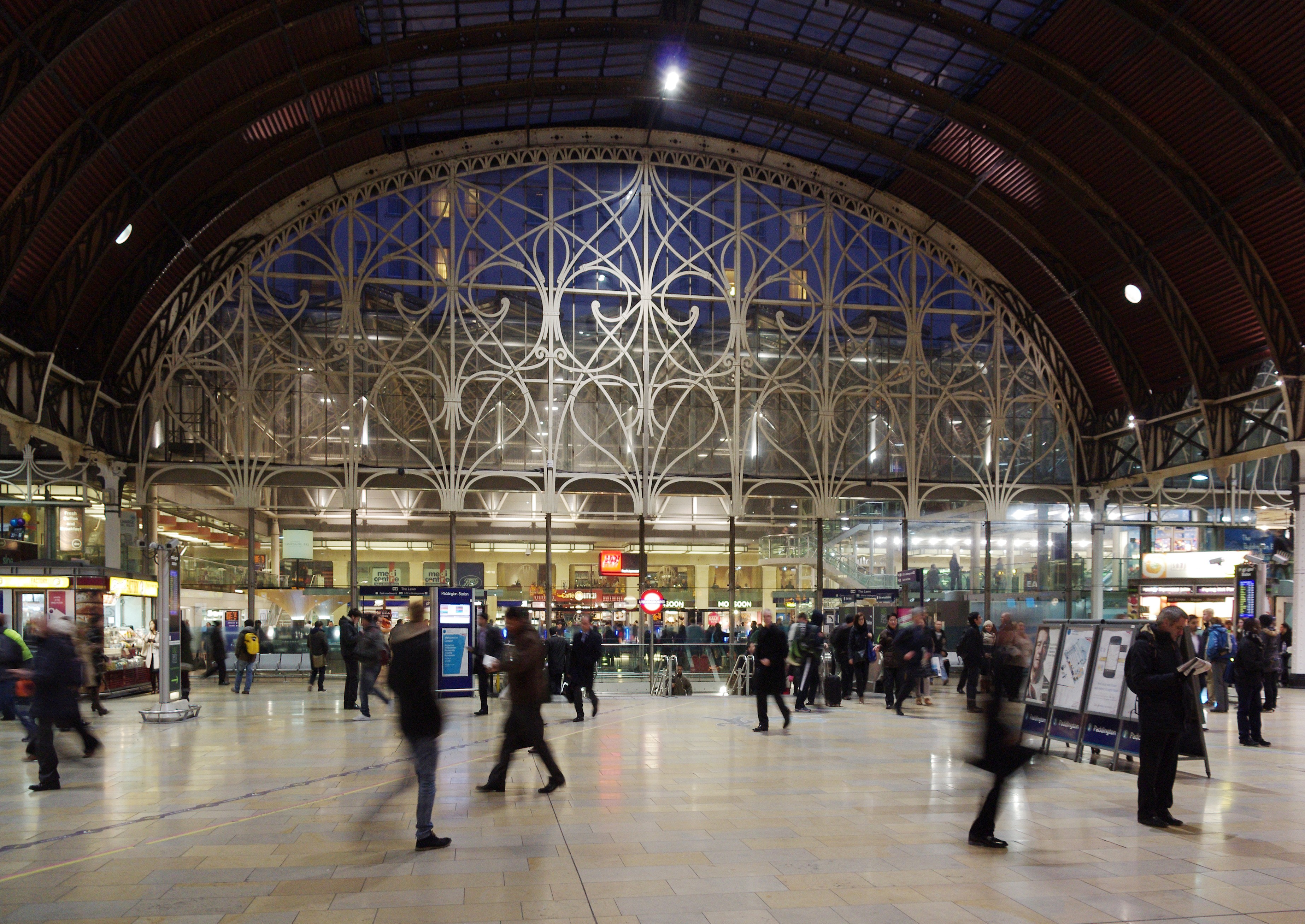
‘Far-fetched’ ideas to combat climate change that may become the new normal
It’s Friday near the end of August in the year 2121, it’s stifling hot — as always — and you’re heading out from the GTA for a weekend getaway.
Packing a few items for your trip to Sudbury, you head down the stairs of your housing complex and grab a quick snack at the cafe below.
The hydrogen-powered bus you catch at the foot of your building arrives quietly, unlike those old stinky diesel buses the city used to run. The rapid transit takes you to the train station where a bullet train will carry you to Northern Ontario. The central transit hub is a hive of activity. Looking around you see people carrying briefcases on their way home from work, others with luggage seemingly preparing for a weekend away, and others sitting at restaurant tables and bar stools having a drink or a bite to eat.
Once on the train, it only takes about an hour to get from Mississauga to Sudbury, so you decide to look out the window as the world whips by.
This may sound like a far-fetched idea, but this “reality” already exists in other parts of the world, Canada is just very far behind. The idea of bullet trains in Ontario may seem like a pipe-dream now, but simply the act of considering these ideas as potential solutions can be progress in our fight against climate change.
When the world is staring down wildfires that will burn tens of thousands of forests, mass flooding and erosion of coastlines that will wreak havoc on our cities, and droughts that will cause mass chaos for our farmers, we need to open our minds to new ideas.
Scientists say we can still save ourselves and nature from disaster, but we are cutting it close. The Intergovernmental Panel on Climate Change (IPCC) released its latest report Monday, highlighting how close to the tipping point we actually are.
The IPCC is the United Nations body tasked with reviewing all known science on climate change. The sixth assessment report, which reviewed thousands of studies from across the world, has been labelled a “code red for humanity” by UN Secretary General Antonio Guterres.
We have known for decades just how poorly we’ve been treating Mother Nature. We have known since the Paris Accord that keeping the world below 1.5 degrees of warming was critical to avoiding serious consequences, yet greenhouse gases have continued to spew into the atmosphere at an accelerated rate and warming has continued unabated.
Hundreds of fires are burning across the interior of British Columbia.
(Am Day on Twitter)
The most recent IPCC report does not make any recommendations for mitigation as its purpose was only to review the most recent science on climate change. But activists and environmentalists have been making suggestions and putting forth ideas that may seem out of the box in Canada, but are already happening in other countries around the world.
One of the most significant battles in mitigating climate change will be convincing people to get out of their cars and start using public transit. In order to do so, some advocates in Peel say we need to start making those transit spaces more appealing.
“I think we need to go big on showcasing our transit stations as destinations in themselves,” Rosemary Keenan, chair of Sierra Club Peel said.
Whether it’s a station stop for GO, or a municipal transit service like Miway or Zum, they all look eerily similar. The stark concrete, hard plastic chairs under dim fluorescent lighting, do not make for the most appealing way to travel. Those stations lucky enough to be included in recent budgets have been upgraded to a modern aesthetic, sleek architecture with a glass exterior, transforming them into an attractive transit hub in the middle of a bustling community.
“Those stations are incredible pieces of architecture, as well as being places that people would want to go to. So how do we go about sort of highlighting and making a big deal of these wonderful, wonderful transit stations,” Keenan says.
Keenan’s inspiration for destination transit comes from London, England. At Paddington Station in the centre of the city, not only can people go from one place to another, they can shop and enjoy markets and cafes. These little hubs are convenient, quick, and make the commuting experience more enjoyable.
Combined with a fast, reliable and easy to navigate transit system, attractive and welcoming stations combined with different amenities are all additional ways to potentially pull drivers off the road and get them into buses and trains.

The concourse at Paddington Station in London.
(Photo from mattbuck - Wikimedia Commons)
With the Sierra Club Peel, Keenan works with a group of other concerned citizens who volunteer their time on environmental campaigns and conservation projects across the Region. The group raises awareness about small changes individuals can do in their everyday life to be better stewards of their local environment, and educating the public on the changing climate.
Keenan believes in the idea of “rewilding” our communities, which is essentially stepping aside and allowing nature to heal. This can come in the form of allowing the front lawn of your home to grow untouched; flowers, weeds, and grasses sprouting up and creating a desirable habitat for many pollinators. On a larger scale, rewilding projects can involve the removal of dykes and dams to allow rivers to regain their natural flow, or reintroducing species that have been extirpated by human activity in certain areas.
In Peel, an example of this process is the Jim Tovey Conservation Area being built along Mississauga’s Lake Ontario shoreline. The Region, along with Peel’s two conservation authorities are constructing a new shoreline around the G.E Booth Wastewater Treatment Facility in Lakeview, which is already attracting wildlife.
The Jim Tovey Conservation Area will host a meadow, wetlands and a small forest on a newly constructed shoreline.
(Natasha O’Neill/The Pointer)
Not every form of our urbanized world can be made wild again, but efforts to mitigate climate change will require municipalities to focus on restoring natural spaces. If the earth continues to warm, catastrophic weather events will occur more frequently, storms usually seen once a century will be almost annual. Flash floods from seemingly random summer storms are not uncommon in the Region and have already cost millions of dollars in damages in the past.
The Region is fitted with wide roads that act as runways for water as the pavement’s impermeable surface forces the water to runoff elsewhere. As the Region continues to grow, more roads will require construction, but instead of using the typical concrete, changing the construction material could be a win-win situation.
Mississauga Ward 2 Councillor Karen Ras pitched the idea to council to use the Sheridan Park parking lot as a test for permeable road construction. The material is similar to existing roads, but the asphalt has open pores that allow water to run beneath the roadway to a stone reservoir.
“I think that would probably have a big impact, if finances weren’t a barrier, I would love to see permeable roads,” she told The Pointer.
Councillor Ras lives in Ward 2, and the area is prone to flooding. She would love to see more people capturing and reusing rainwater. If money were not an obstacle, she wants more residents using rain barrels.
Local environment activist Rahul Mehta with his rain barrel.
(Contributed Rahul Mehta)
“The easiest thing would be to give everybody who doesn't live in an apartment building rain barrels, which not a lot of people utilize,” Ras said.
The Region of Peel does have a rain barrel program, where members of the community can purchase a barrel for their personal use. The barrels are $50 and can be picked up at various locations. Unfortunately, the cost of the barrels may leave some constituents not able to afford the program. The tool for mitigation is also only available for pick up in Caledon, making anyone who relies on public transit unlikely to buy one.
Another very easy idea to bring more nature back to our concrete jungles is creating spaces for biodiversity to thrive within them.
Maggie Chang recently graduated from University of Waterloo’s environment, resources and sustainability program, where she found a hatred for suburban lawns.
“I personally have kind of a huge beef with grass lawns,” she says. “They're not ecologically very useful, nobody is really using them, they're not biodiverse, and actually, a lot of the times people create a lot of greenhouse gases and use pesticides to keep their lawns green and pretty looking.”
Chang was named in The Starfish Canada’s Top 25 Environmentalists under 25, which is a program that celebrates young leaders creating positive change in their communities.
A diverse and thriving ecosystem is a wild one, free of human intervention. It has insects, organisms and different plant species all thriving in one area, living harmoniously in the circle of life. What humans call weeds, feed bees and butterflies and provide nesting materials for birds. Most cities, including Mississauga, have bylaws preventing residents from having unkempt lawns, making rewilding an offence.
Under the Nuisance Weed and Tall Grass Control By-law, residents must keep their grass cut and maintained to a height not higher than 20 centimetres. All weeds need to be destroyed or removed from properties as well. According to the Government of Ontario website, a noxious weed would be the bull thistle. These plants grow higher than 20 centimeters and offer sweet nectar to insects. Oftentimes getting rid of these plants means using harmful chemicals on grass further destroying the environment.
Shifting away from these dated bylaws — put in place for little more than aesthetics — could create a shift in people’s perceptions.
“It helps bring the natural world into the city, which is actually a huge ideological shift,” Chang says.
Monarch butterflies and bees both enjoy the bull thistles.
(Natasha O’Neill / The Pointer)
This shift needs to be made not only in how we build our communities, but how we go through every part of life. Kirk Johnson is the president of Eco-Efficiency Consulting, and believes real climate action starts with our mindset.
“The biggest innovation actually is taking place between our ears,” Johnson told The Pointer.
People need to be emotionally invested in climate change, but seeing the world burning on TV screens and smartphones may not be enough to alert them to the pressing threat that climate change poses. Typically, if people do not feel directly impacted, it can be hard to get them to care, especially when that caring will involve uncomfortable shifts in an individual’s way of life. But getting people to consider the solutions as opposed to the problem, can be a possible path to change.
Johnson says the “cool factor” is how to change the way people see innovative and sustainable practices in a local community.
Think about your own home: is there a draft during blustery winter days? Are you sweltering in 30 degree heat waves? Can it be too damp in the spring and too dry in the winter? All these issues can be solved by retrofitting homes with sustainable systems. This practice means adding backwater valves, solar panels, insulating around windows and doors, and installing a heat pump to make the household more energy efficient.
These additions can be pricey, ranging from $50,000 to $75,000 depending on how large the home is, certainly out of reach for any lower income homeowners.
Johnson suggests a retrofitting program grant — something Mississauga is considering — for a specific community to get things started, which could potentially spark a desire for neighbouring homeowners to put in place the same changes once they have seen an tangible example of this work in action, and maybe even heard some of the benefits from their neighbours.
“Everyone will want to keep up with the Joneses,” Johnson says, adding the initial grant program will encourage other neighbourhoods to retrofit their homes as well.
This domino effect of making climate action the norm is how to change our ideological viewpoint on our currently unsustainable world. Not long ago, climate change ideas that were labeled as ridiculous or irrational are now normal. Stephen Scharper, director of Trinity College’s sustainability initiative and associate professor at the University of Toronto Mississauga believes all ideas may seem a bit too far-fetched at first, but may end up being foundational later.
“I remember in 1999 or so I was teaching an introductory course to environment at U of T. and I brought in Jack Gibbons, and Jack had started the Ontario Clean Air Alliance, and he says to the 300 students, ‘our goal is to close all coal-fired plants in Ontario.’ And the students said ‘Yeah right, like that's going to happen in our lifetime.’”
The last coal-fired electricity plant closed in Ontario in 2014, the process starting in 2003, a few years after the lecture.
When ideas are first presented, they are often just the seeds of bigger solutions. Technology is rapidly evolving our world, giving humans increased access to cleaner technologies and ways to travel. Scharper believes high-speed transit is vastly underutilized in Canada.
China has been using their rapid transit trains since 2003, and recently updated the systems to travel faster. Their track network now reaches over 37,000 km of land and has trains operating at 400 to 600 kilometers per hour. This technology has been tested in blistering heat waves and numbing colds making the invention potentially feasible in Canada’s climate.

Could bullet trains be part of Ontario's future?
(Photo from Gary Todd/Wikimedia Commons)
Climate change is destroying the lives of vulnerable populations and our valuable ecosystems across the globe. It’s not enough to call on our leaders to enact changes, as a society and individuals we need to do our part as well. Changing bylaws or entering into discussions with friends and family about how to become more green may start the domino effect needed in the community.
Email: [email protected]
Twitter: @taasha__15
COVID-19 is impacting all Canadians. At a time when vital public information is needed by everyone, The Pointer has taken down our paywall on all stories relating to the pandemic and those of public interest to ensure every resident of Brampton and Mississauga has access to the facts. For those who are able, we encourage you to consider a subscription. This will help us report on important public interest issues the community needs to know about now more than ever. You can register for a 30-day free trial HERE. Thereafter, The Pointer will charge $10 a month and you can cancel any time right on the website. Thank you
Submit a correction about this story


